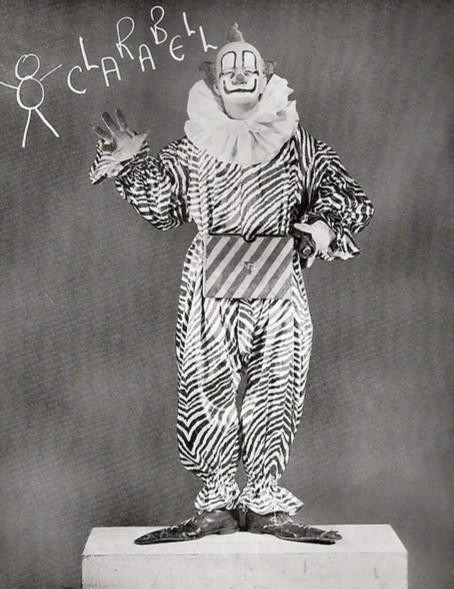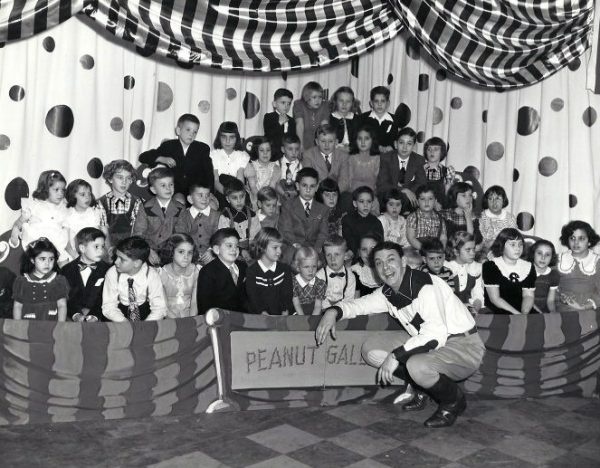If your parents or grandparents grew up in the United States in the 1950s, there’s a decent chance that they know the theme song to The Howdy Doody Show. The Howdy Doody Show is one of those pieces of 1950s ephemera that has come to symbolize mid-century American childhood. For over a decade, every weeknight at 5pm, kids all across the country would sit down in front of their parents’ tiny televisions and take in the wild west adventures of Buffalo Bob and his puppet sidekick Howdy Doody.

At the time, there wasn’t anything quite like it. Imagine a singing cowboy performing a puppet show for your birthday, only five nights a week. The show was disproportionately important in the history of television. It was the first television program to reach 1,000 episodes, one of the first shows to broadcast in color, and it pioneered new ways of marketing products to children. But in the early days of the medium, especially when Howdy Doody first started, the world of television was strange. In many ways, the story of Howdy Doody is the story of the weird, wild-west days of early TV. A story in which programmers, advertisers, artists and money men were inventing everything as they went along. Starting with what to put on television in the first place.
The very first TV shows, including Howdy Doody, had no prior TV shows to build on. Instead, they had to steal their programming ideas from other, older mediums, most notably: radio. Buffalo Bob, the show’s lead, had previously been a popular radio DJ, who had hosted his shows sitting at a piano, where he would sing along to records, perform comedy sketches and read the weather — along with his sidekick, a country bumpkin character which slowly evolved into a happy 10 year old boy named Howdy Doody.

After the first television sets became commercially available in the 30s, for a long time, well into the 40s, the medium actually had a hard time catching on. For starters, unlike radio, which had a huge variety of shows, there wasn’t much to watch on these small, grainy black and white screens. When televisions first went on the market, few people could afford one, nor was television a nationwide medium yet. Most of the early television stations were in New York, and those first broadcast signals didn’t reach all that far. So nearly everyone who did own a TV lived in the New York area. Also, video playback didn’t exist yet, meaning television shows in the early days had to go out live.
But then, in 1947, NBC found something new to put on the air by borrowing a trick from the vaudevillian playbook. Puppets. Puppets were highly visual. They were live. They were cheap. And – perhaps most importantly – kids loved them. The plan was to do a one hour kids special at the ungodly early hour of 5pm – called Puppet Playhouse. They tapped Bob Smith to host it, along with a puppet version his country yokel sidekick – Howdy Doody.

Bob and Howdy would have all sorts of adventures together, usually designed to teach the kids a valuable lesson. There was also a rotating cast of other characters portrayed by mix of puppets and live actors. Some leaned on racist stereotypes, like an Indian chief named Thunderthud (whose character coined the term “cowabunga”). Other characters included a villainous mayor named Phineus T. Bluster, and a mute clown named Clarabel, who blasted everyone in the face with a horn and a seltzer bottle.
A Certified Hit!
The executives at NBC knew they had a quality show on their hands, but the problem was there was no easy way of knowing just how many kids were actually watching it. Nielsen television ratings didn’t exist yet, making it hard to sell programs to sponsors. Not without data, and without sponsors there was no profit. But in 1948 NBC executives devised a scheme to get a better sense of how many children were watching the show. They created a story that Howdy Doody was running for president and asked viewers to send in a postcard with a write in vote for Howdy Doody to NBC. After all of the postcards were counted they realized they that they had an astronomical amount of viewers. Within months, some of the biggest brands in the country wanted to sponsor the show. Colgate, Ovaltine, Kellogg’s. The department store Macy’s wanted to sell Howdy dolls, and NBC was more than happy to arrange a licensing deal. Money was pouring in.

For the next decade, Howdy Doody had an unprecedented run of success. It was the first kids show to be broadcast nationally and the first to regularly broadcast in color. And as the show became more popular so too did television itself. When Howdy Doody first went on the air in December of 1947, there were fewer than 200,000 television sets in America. By 1960, it was the longest running show on TV, and America had nearly 50 million televisions. Almost 90% of the country owned a TV.
Howdy Doody Sells Out
In 1950, Buffalo Bob agreed to sell Howdy Doody to a new company created by NBC and the Wall Street firm Lehman brothers called KAGRAN. When KAGRAN took over, sponsors became increasingly involved both on screen and off. More and more companies started to see the potential of marketing their products to kids.
At the same time, television was evolving as a medium. New children’s shows were popping up. Howdy had competition, including perhaps the biggest development in children’s TV, the cartoon. The other networks realized that airing cartoons was cheaper than filming a bunch of actors on soundstages every week, and kids loved them. Also, competing live action kids shows didn’t go away – they just got more visually sophisticated. Including the show that would prove to be the perfect marriage of live action and cartoon IP, The Mickey Mouse Club. As competing programs evolved around it, Howdy looked increasingly old-fashioned and threadbare.
In 1956, the executives at NBC cut the show back from five days a week to just one, on Saturday afternoon. It went went off the air completely in 1960. But not before helping to prove that television was something more than gimmick – and entertaining an entire generation of American children.



Leave a Comment
Share